In the early hours of June 22, 2025, the Middle East entered a new phase of strategic confrontation following the United States' execution of a calibrated series of precision airstrikes against three of Iran’s most critical nuclear facilities: the Fordow Fuel Enrichment Plant, the Natanz Enrichment Complex, and the Isfahan Nuclear Technology Center. These strikes marked a significant inflection point in American policy toward Iran's nuclear program, signifying a deliberate departure from the long-preferred instruments of sanctions, diplomacy, and covert sabotage toward direct military action aimed at functionally dismantling Iran’s enrichment capacity.
The U.S. intervention did not occur in a vacuum but was preceded by a sweeping nine-day Israeli air campaign— “Operation Rising Lion”—which inflicted substantial damage on Iran’s conventional military and nuclear infrastructure. Yet U.S. strategic assessments concluded that Israeli capabilities alone would fall short of neutralizing the deeply buried Fordow facility, located nearly 90 meters beneath the mountains near Qom. Accordingly, Washington deployed B-2 Spirit bombers from Whiteman Air Force Base and launched submarine-based Tomahawk cruise missiles, employing—for the first time in combat—the GBU-57 Massive Ordnance Penetrator, a 30,000-pound precision-guided “bunker buster” weapon. The strikes were designed not merely to degrade but to decapitate Iran’s uranium enrichment trajectory at every critical juncture.
While the U.S. administration proclaimed the operation a “complete and total success,” Iran’s leadership sought to downplay the extent of the damage, signalling both resilience and continued intent to pursue its nuclear ambitions. Tehran’s initial response refrained from large-scale direct retaliation, instead signalling a likely pivot toward asymmetric reprisal via regional proxies such as the Houthis, alongside diplomatic escalation and renewed threats to abandon the Nuclear Non-Proliferation Treaty (NPT). This calibrated restraint highlights the regime’s acute awareness of the potentially existential consequences of a direct confrontation with the United States.
Structurally, the strikes reflect a paradigmatic shift in U.S. non-proliferation doctrine: from risk management through deterrence and arms control to selective, high-precision coercion. The operation also underscores a changing regional deterrence architecture, in which American military intervention is no longer conditioned by alliance consensus or Gulf coordination, as several key Arab states were reportedly excluded from prior notification. This signals an American willingness to act unilaterally—or bilaterally with Israel—when core proliferation red lines are deemed to have been crossed.
Anatomy of the Strike: A Decisive U.S. Intervention
The military strikes launched by the United States on June 22, 2025, against Iran’s core nuclear infrastructure represent a defining moment in the strategic evolution of the Middle East. More than a tactical escalation, these strikes constituted a deliberate transition in American policy—marking the first direct use of overt military force to dismantle Tehran’s uranium enrichment capabilities. The operation, conceived and executed in coordination with Israel, reflects a recalibrated U.S. approach to deterrence, non-proliferation, and regional coercion, unfolding at a moment when the risk calculus surrounding Iran’s nuclear program had crossed a critical threshold.
Strategic Precursor: Israel’s “Operation Rising Lion” (June 13–21, 2025)
The U.S. intervention was preceded by Israel’s unprecedented ten-day air campaign, “Operation Rising Lion,” launched on June 13, 2025. Which marked a sharp departure from the longstanding doctrine of ambiguity that had governed Israeli-Iranian engagements for over two decades. Israel justified the operation on the basis of intelligence assessments indicating that Iran was nearing a nuclear breakout. The campaign involved over 1,000 airstrikes targeting Iranian air defenses, command and control systems, ballistic missile platforms, and above-ground components of Iran’s nuclear infrastructure, including the Natanz and Isfahan sites.
Iran’s response came in the form of large-scale ballistic missile and drone barrages aimed at Israeli urban centres and military facilities, causing civilian casualties and prompting a national emergency. This shift from covert attrition to direct inter-state military exchange fundamentally altered the regional deterrence landscape and catalysed U.S. engagement. In Washington’s assessment, the strategic risk of inaction—allowing either Iranian escalation or Israeli overreach—was greater than the risks associated with calibrated U.S. intervention.
Structure of the U.S. Operation: Timing, Assets, and Doctrine
Commencing at approximately 2:30 a.m. Iran Standard Time (23:00 UTC, June 21), the U.S. strike unfolded as a highly coordinated, multi-domain assault designed to achieve maximum tactical and strategic effect in minimal time.
The primary strike force consisted of at least six B-2 Spirit stealth bombers operating from Whiteman Air Force Base in Missouri. Their intercontinental, non-stop mission underscored the unique capacity of the United States to project precision strike power globally without reliance on forward basing. These aircraft targeted Iran’s most hardened facilities—primarily Fordow—using GBU-57A/B Massive Ordnance Penetrators (MOPs), 30,000-pound precision-guided munitions engineered specifically to destroy deeply buried structures.
Simultaneously, U.S. Navy attack submarines stationed in undisclosed regional waters launched approximately 30 Tomahawk Land Attack Missiles (TLAMs) aimed at less fortified elements of Iran’s nuclear infrastructure. The integration of air and sea platforms was not only tactically advantageous, but also strategically symbolic—demonstrating America’s capacity to operate across multiple domains with lethal precision and layered ambiguity.
The operation’s munitions architecture was meticulously tailored: MOPs targeted the subterranean centrifuge halls at Fordow and Natanz, while TLAMs degraded above-ground support infrastructure and auxiliary components at Natanz and Isfahan. The mission marked the first combat use of the MOP, and its deployment was as much a demonstration of intent as it was an instrument of destruction.
Target Selection: Strategic Rationale and Operational Objectives
The strike’s target set reflected a coherent and vertically integrated strategy aimed at collapsing Iran’s nuclear fuel cycle at three critical points.
- Fordow Fuel Enrichment Plant, was the most fortified and politically symbolic site in Iran’s program. The facility was known to house advanced centrifuges enriching uranium to 60%, with intermittent detection of enrichment levels approaching 83.7%—a threshold functionally equivalent to weapons-grade material. Israel’s conventional arsenal lacked the penetrative capacity to neutralize Fordow; U.S. participation was therefore indispensable.
- Natanz Nuclear Facility, Iran’s primary enrichment complex, features both surface-level operations and deeply embedded centrifuge halls. Israeli strikes had already disrupted power and damaged surface installations. U.S. follow-on strikes using MOPs and TLAMs sought to inflict irreparable damage on the core enrichment infrastructure, thereby completing the degradation process.
- Isfahan Nuclear Technology Center, central to Iran’s conversion capabilities, includes the Uranium Conversion Facility (UCF) responsible for producing uranium hexafluoride (UF₆). While not an enrichment site per se, Isfahan represents the initial phase of the nuclear fuel cycle. Targeting this node signalled a broader intent: not merely to interrupt enrichment, but to sever the upstream flow of feedstock materials.
The operational logic was unambiguous: to achieve a near-total incapacitation of Iran’s known uranium pathway—disabling not only the machinery, but also the strategic confidence of the regime in the survivability of its nuclear infrastructure.
Strategic Messaging and the Diplomacy of Force
The kinetic phase of the operation was embedded within a broader matrix of strategic communication and diplomatic signalling. President Trump declared the mission a “complete and total obliteration” of Iran’s nuclear enrichment capacity, framing it as a response to Iran’s non-compliance with international norms and its support for destabilizing regional actors.
However, this maximalist public rhetoric was counterbalanced by discreet diplomatic outreach—reportedly via neutral intermediaries such as Oman and Switzerland—intended to reassure Tehran that the United States did not seek regime change and that the scope of the operation was deliberately limited to nuclear infrastructure. The objective was to decouple tactical escalation from strategic spiral, preserving the possibility of Iranian restraint.
At the same time, the administration issued stark deterrent warnings: any retaliatory action against U.S. assets would trigger a disproportionate response. This dual messaging—combining overwhelming power with conditional restraint—conforms to the model of coercive diplomacy under high-stakes conditions, designed to shape adversarial behaviour through calibrated ambiguity and strategic pressure.
While the operation was executed in full coordination with Israel, it notably excluded prior consultation with several Gulf Cooperation Council (GCC) states that host substantial U.S. military forces. This omission—likely a function of operational security—risks long-term political fallout, particularly among regional partners already seeking to diversify their strategic alignments amid growing uncertainty about U.S. reliability.
Taken together, the strike embodies a strategic doctrine that merges real-time military dominance with psychological dislocation. The deliberate targeting of Fordow, the most symbolically protected node in Iran’s nuclear complex, constituted a direct challenge to the Iranian regime’s deterrence narrative. For Washington, the strike served multiple objectives: degrading Iran’s capabilities, bolstering regional deterrence, reaffirming alliance credibility with Israel, and reasserting American primacy in a region where its strategic posture has been perceived as increasingly hesitant.
The Immediate Aftermath: Damage, Fallout, and Information Warfare
The U.S. strikes on Iran’s nuclear facilities triggered a complex array of immediate consequences—military, environmental, and informational. While the kinetic phase concluded within hours, the aftermath has unfolded across multiple domains, each characterized by contested narratives, strategic ambiguity, and an intense struggle over perception management. In the absence of independent verification, both Washington and Tehran moved swiftly to shape the global discourse, each constructing competing versions of what occurred, why it mattered, and what would come next.
Battle Damage Assessment: Competing Claims, Strategic Silences
In the hours following the strikes, the absence of independently verified battle damage assessments created a discursive vacuum, quickly filled by both sides with narratives serving distinct strategic objectives. The United States, led by President Trump, adopted a posture of declaratory dominance. The administration asserted that Iran’s “key nuclear enrichment facilities have been completely and totally obliterated,” framing the operation as a demonstration of unmatched American power and as a necessary act of pre-emption against a near-term nuclear threat. This maximalist narrative served several constituencies: it offered a domestic political win, reinforced deterrence vis-à-vis adversaries, and positioned the United States as the primary arbiter of regional security.
— Donald J. Trump (@realDonaldTrump) June 21, 2025
Iran, by contrast, engaged in narrative minimization. The Atomic Energy Organization of Iran acknowledged that attacks had occurred but insisted that the country’s nuclear program remained intact and would resume “without interruption.” A member of parliament representing Qom claimed that Fordow had only sustained “minor surface-level damage,” which was already being repaired. Other officials asserted that the facility had been “pre-emptively evacuated” and that all critical material and equipment had been relocated. These statements were carefully calibrated to preserve internal morale, reassure allied networks such as Hezbollah and the Houthis, and project regime resilience in the face of foreign aggression.
The truth, likely situated between these two poles, remains obscured by the limitations of open-source intelligence. While commercial satellite imagery providers are expected to release high-resolution before-and-after imagery, such tools may be insufficient to determine the extent of subsurface structural damage, particularly at deeply buried facilities like Fordow. The question of whether the MOPs delivered a “functional kill” by collapsing centrifuge halls and rendering enrichment operations inoperable may remain unanswered in the public domain for some time.
Preliminary assessments by Western intelligence services, however, have reportedly concluded that Fordow suffered substantial damage—possibly sufficient to disable operations for an extended period. Yet even if total physical destruction was not achieved, the psychological impact of the strike—specifically the demonstration that no facility, however fortified, is beyond American reach—may prove equally significant. Tehran’s counter-narrative, while aimed at domestic cohesion and deterrence restoration, does not negate the operational disruption and strategic signalling achieved by the strike.
Radiological and Environmental Impact: Avoiding Catastrophic Escalation
One of the most consequential features of the strike was what did not happen: the absence of a major radiological event. Both the International Atomic Energy Agency (IAEA) and Iran’s National Nuclear Safety System issued statements confirming that there was no measurable increase in off-site radiation and no contamination in surrounding population centres. This outcome was not incidental; it was the result of deliberate targeting decisions by U.S. and Israeli planners.
Following attacks on three nuclear sites in Iran – including Fordow – the IAEA can confirm that no increase in off-site radiation levels has been reported as of this time.
IAEA will provide further assessments on situation in Iran as more information becomes available.— IAEA – International Atomic Energy Agency ⚛️ (@iaeaorg) June 22, 2025
The targeted sites are all part of the “front end” of the nuclear fuel cycle, dealing with uranium conversion and enrichment, rather than power generation or spent fuel storage. The primary nuclear material present is UF₆, which, while chemically hazardous, is only mildly radioactive. If released, UF₆ reacts with atmospheric moisture to form hydrogen fluoride and uranyl fluoride, both of which are toxic but would pose localized rather than regional risks.
This stands in stark contrast to the catastrophic potential associated with an attack on an operational nuclear power reactor—such as the Russian-built Bushehr facility. A strike on a functioning reactor core could release long-lived radionuclides such as cesium-137 and iodine-131, producing a plume of radioactive contamination similar to the Chernobyl or Fukushima disasters. Such an outcome would trigger mass evacuations, long-term ecological damage, and near-universal international condemnation, including from states otherwise aligned with Washington. The fact that Bushehr was deliberately spared highlights a clear recognition of this threshold—what might be termed a “radiological red line.”
The technical and political prudence behind these targeting choices also reflects an understanding of the strategic cost-benefit calculus. Had the United States induced a radiological crisis, the legitimacy of its strike would have been undermined, and global diplomatic isolation would have been a near certainty. Instead, the operation preserved a degree of normative credibility while delivering a substantial kinetic effect.
Iran, for its part, has emphasized that sensitive materials and scientific personnel were evacuated in advance of the strike—a claim that, if true, suggests a broader strategy of redundancy and dispersion. This underscores a critical point: the Iranian nuclear program’s most valuable assets are no longer confined to physical infrastructure, but rather include its stockpile of enriched uranium and, more crucially, the technical expertise of its scientific cadre. By preserving these core components, Tehran may be preparing for a long-term program of reconstitution—potentially in undisclosed, more deeply buried facilities. In this sense, the strike may mark not the end of Iran’s nuclear trajectory, but the beginning of its next, more clandestine phase.
In sum, the immediate aftermath of the June 22 strikes reveals a multi-layered strategic contest. The United States prioritized operational effectiveness while avoiding humanitarian catastrophe; Iran sought to mitigate reputational costs while preserving strategic ambiguity. Both sides now operate in a liminal space defined not by decisive outcomes, but by the management of perception, deterrence recalibration, and the anticipation of the next move in a still-evolving confrontation.
Tehran’s Calculus: The Response Matrix
The U.S. strikes on Iran’s nuclear facilities on June 22, 2025, forced the Iranian regime into its most acute strategic dilemma since the Iran–Iraq War. By targeting the deeply fortified Fordow enrichment site the operation not only dealt a severe blow to the physical infrastructure of the nuclear program but also ruptured the psychological architecture of Iran’s strategic posture. The regime now faces a tightly constrained matrix of response options, each fraught with profound risks for its political legitimacy, regional influence, and even regime survival.
The Strategic Trilemma: Retaliate, Absorb, or Escalate Indirectly
Iran’s immediate challenge lies in choosing among three high-stakes strategic pathways. A symmetric, direct military retaliation—such as striking U.S. or Israeli targets—may restore damaged credibility but carries the near-certainty of a devastating American counterstrike, potentially jeopardizing the regime’s continuity.
Conversely, restraint or absorption of the blow may preserve national assets in the short term but risks internal demoralization, loss of deterrent credibility, and emboldening adversaries. A third option—indirect asymmetric escalation—offers a more flexible path. This would entail activating proxy networks, escalating maritime disruption, cyberattacks, or reconfiguring Iran’s nuclear doctrine. While less likely to provoke a full-scale war, this approach risks uncontrolled escalation, particularly if it crosses red lines set by Washington or Tel Aviv.
Internal Political Dynamics: The IRGC vs. the Pragmatists
Iran’s response is further complicated by deep-seated institutional divisions within the Islamic Republic. The Islamic Revolutionary Guard Corps (IRGC) and its affiliated security apparatus advocate for decisive retaliation to reaffirm Iran’s strategic will and avoid what they perceive as a slippery slope toward permanent vulnerability. For this faction, a muted response would constitute a dangerous precedent that could undermine Iran’s position vis-à-vis regional adversaries and its domestic base.
In contrast, the pragmatic bloc—represented in part by President Masoud Pezeshkian and segments of the technocratic elite—emphasizes the catastrophic cost of a direct war with the United States. This camp highlights Iran’s economic fragility, the depletion of its missile infrastructure following Israel’s air campaign, and the fragmentation of its regional axis of resistance as arguments for a restrained and calibrated approach.
Ultimately, the decision rests with Supreme Leader Ali Khamenei. His final judgment will reflect not only ideological inclination but a sober cost-benefit calculation regarding the regime’s long-term survival. His task is to balance internal pressures from hawkish factions against the existential consequences of uncontrolled escalation.
Direct Retaliation: Capabilities and Constraints
Iran’s initial response was widely interpreted as a calibrated signal rather than a full-fledged retaliatory operation. However, the feasibility of a sustained direct military response is constrained by a range of operational limitations.
The preceding Israeli campaign significantly degraded Iran’s missile architecture, reportedly destroying roughly half of its known ballistic launch platforms and disabling multiple command-and-control nodes. While Iran still maintains a sizable inventory of medium- and long-range missiles capable of reaching Israeli and U.S. targets, its capacity to launch dense, coordinated salvos sufficient to overwhelm layered missile defence systems (e.g., Arrow-3, THAAD, Patriot) is now questionable.
Moreover, any direct strike resulting in significant American casualties—especially at forward-deployed bases in Qatar, Bahrain, or the UAE—would likely trigger an overwhelming U.S. response, potentially including attacks on strategic regime assets. In such a scenario, the distinction between deterrence signalling and war-initiation would collapse entirely.
Asymmetric Escalation: Proxies, Maritime Chokepoints, and Covert Operations
Given the prohibitive risks of symmetrical warfare, Iran is expected to lean heavily on its traditional tools of asymmetric power projection. However, the Axis of Resistance is not what it once was. Hezbollah remains militarily potent but is severely weakened following the 2024 war with Israel and faces logistical constraints due to the erosion of Syria as a secure land corridor. Iraqi Shiite militias remain operational but are cautious about provoking direct U.S. retaliation on Iraqi soil and may require explicit Iranian guarantees of strategic cover.
The most viable and operationally ready component of the proxy network are the Houthis in Yemen. Having emerged from recent regional conflicts with enhanced capabilities and political confidence, the Houthis possess long-range drones and ballistic missiles capable of reaching Israeli and Gulf targets. They are well-positioned to intensify attacks on commercial shipping in the Red Sea and Bab al-Mandeb Strait—creating systemic disruptions to global maritime flows and stretching U.S. naval resources. Such actions provide Iran with plausible deniability while imposing disproportionate strategic costs on its adversaries.
In parallel, Iran may resort to covert operations abroad, including cyberattacks against critical infrastructure or proxy-led bombings of U.S. and Israeli diplomatic, economic, or symbolic assets in third countries. These methods are designed to inflict pain without attribution and have historically been employed to signal resolve while avoiding open conflict.
The Nuclear and Diplomatic Offensive: Legal Framing and Doctrinal Shift
While military and proxy options dominate the discourse, Iran’s most strategically consequential move may be in the nuclear and diplomatic domain. In the immediate aftermath of the U.S. strikes, Tehran launched an aggressive legal campaign, labelling the operation a violation of international law and the NPT. It has requested emergency U.N. Security Council sessions and sought to rally Russia, China, and the Global South behind a narrative of American overreach.
The real danger, however, lies in the possibility that Iran may recalibrate its nuclear doctrine entirely. Faced with what it perceives as the futility of international legal frameworks and the failure of deterrence, Tehran may conclude that only an operational nuclear weapon can safeguard the regime’s survival. In this scenario, Iran would likely announce its withdrawal from the NPT, expel IAEA inspectors, and embark on a covert, time-compressed effort to produce a deliverable nuclear device—potentially within undisclosed facilities.
Such a shift would constitute a strategic earthquake in regional security architecture. It would likely trigger accelerated nuclear hedging by regional powers such as Saudi Arabia, Egypt, and Turkey, and may provoke pre-emptive strikes or military campaigns aimed at forestalling Iranian weaponization. In effect, the post-strike phase could mark the beginning of a multi-actor nuclear arms race in the Middle East, with long-term implications for global non-proliferation regimes.
The Escalation Ladder: Pathways to a Wider War
The U.S. strikes on Iran’s nuclear facilities on June 22, 2025, did not conclude the cycle of confrontation; rather, they initiated a new and volatile phase in the regional conflict. The operation marked the entry into a highly unstable strategic environment characterized by a precarious balance between deterrence maintenance and inadvertent escalation. What now lies ahead is not a path toward de-escalation, but the emergence of an escalation ladder—an incremental, multidimensional trajectory that may push the region toward a systemic war. This section identifies four central domains through which escalation may accelerate: maritime chokepoints, regional power alignments, great-power dynamics, and potential tripwires that could trigger uncontrollable conflict.
Maritime Chokepoints: Strategic Vulnerability in the Global Energy System
The world economy remains critically dependent on a handful of narrow maritime corridors, chief among them the Strait of Hormuz and the Bab al-Mandab Strait. Iran’s historical doctrine has long included the option of restricting or disrupting navigation in the Strait of Hormuz in response to existential threats. This waterway carries approximately 20–30% of all globally traded seaborne oil, as well as a significant portion of liquefied natural gas exports, particularly from Qatar. Iran possesses the tools to disrupt shipping—naval mines, fast-attack craft, land-based anti-ship missiles, and midget submarines—but any move to militarize the strait would cross a longstanding U.S. red line, rooted in the Carter Doctrine of 1980, and would trigger an immediate and large-scale naval response from U.S. 5th Fleet assets in Bahrain.
Simultaneously, the Red Sea and Bab al-Mandab Strait are emerging as additional pressure points. The Houthis have already resumed attacks on commercial vessels in the region, forcing shipping lines to reroute traffic around the Cape of Good Hope. This development compounds the threat to Hormuz, creating the prospect of a “dual chokepoint crisis” that would destabilize global supply chains, increase transportation costs, and induce sustained volatility in commodity markets. The resulting economic shock could rival the oil crises of the 1970s in scope and severity.
Regional Powers: Hedging Strategies and Strategic Ambiguity
Key regional actors—particularly the GCC states and Turkey—find themselves navigating an increasingly treacherous strategic terrain. On the one hand, they are heavily reliant on U.S. security guarantees, hosting American forces and participating in intelligence-sharing frameworks. On the other hand, they are deeply invested in preserving regional stability and avoiding direct entanglement in a full-scale war with Iran.
Saudi Arabia, the UAE, and Qatar, despite their formal security partnerships with Washington, were not notified in advance of the U.S. strike—a fact that has reportedly strained bilateral trust. In response, these states are pursuing risk-averse strategies: enhancing air defence systems, intensifying backchannel diplomacy with Iran via intermediaries such as Oman and Iraq, and reinforcing civil protection mechanisms for key economic infrastructure.
Turkey’s approach is informed by strategic ambivalence. As a NATO member, Ankara has formal alignment with Western powers, yet it also maintains complex energy and security ties with Tehran. Turkish policymakers are likely to use the crisis to bolster Ankara’s role as a regional mediator and assert influence over the evolving regional balance, particularly in Syria, Iraq, and the Eastern Mediterranean. For both the Gulf states and Turkey, the overriding imperative is to prevent the conflict from spilling into their territories while preserving manoeuvrability within shifting regional alliances.
Great Power Competition: Russia, China, and the Reshaping of Strategic Equilibrium
The Iran crisis is being closely monitored by Moscow and Beijing, both of which interpret the escalation through the lens of global systemic competition. Russia and China issued strong condemnations of the U.S. and Israeli actions, framing them as violations of international law and as symptoms of American unilateralism. While both powers have called for restraint and renewed diplomacy, their motives diverge in important ways.
Russia views the conflict as an opportunity to undercut U.S. influence in the Middle East and to project itself as an indispensable diplomatic actor. Moscow is likely to offer itself as a mediator, thereby enhancing its leverage in other theatres—especially Ukraine. However, Russia’s ability to provide Iran with meaningful military or economic support remains limited, given its overstretched resources and global isolation.
China’s posture is primarily driven by concerns over energy security and trade stability. The Gulf remains critical to China’s energy imports and to the viability of its Belt and Road Initiative. Beijing has condemned the escalation rhetorically, but it is expected to exert quiet pressure on both Iran and the United States to avoid disrupting maritime energy flows. For both Russia and China, the conflict offers a strategic intelligence-gathering opportunity—an occasion to study U.S. capabilities, coalition dynamics, and thresholds for escalation in real time.
Tripwires and Catalysts: Events That Could Trigger Uncontrolled Escalation
Despite public statements by all major actors signalling a preference for restraint, the environment remains highly combustible. A number of plausible scenarios could serve as escalation triggers, rapidly transforming a contained confrontation into a multi-theatre regional war.
Among the most dangerous are: a successful Iranian missile strike on a major U.S. base such as Al Udeid in Qatar; the sinking of a U.S. naval vessel in the Persian Gulf; or an attack on Saudi or Emirati oil infrastructure leading to mass casualties. Any of these developments would likely compel a direct and large-scale military response from the United States and its regional allies, irreversibly widening the conflict.
Other potential catalysts include a full-scale Hezbollah assault on Israeli population centers, prompting an Israeli ground invasion of Lebanon; cyberattacks on Gulf state infrastructure with cross-border effects; or the downing of a civilian aircraft in a high-tension airspace. Such incidents—whether accidental, miscalculated, or deniable—could serve as black swan events, disrupting strategic calculations and making de-escalation politically or militarily untenable.
To conclude, the U.S. airstrikes against Iran’s nuclear infrastructure in June 2025 represent a watershed moment in the evolution of regional security dynamics in the Middle East. Far from being a tactical episode, the operation marked a structural shift—from prolonged strategic ambiguity and managed deterrence to overt military confrontation. It exposed not only the physical vulnerability of Iran’s most fortified nuclear sites but also the psychological limits of deterrence narratives long cultivated by the Islamic Republic.
This campaign did not result in the outright dismantlement of Iran’s nuclear program; rather, it catalysed a recalibration of Tehran’s strategic calculus. Faced with internal divisions between a security-driven hardline bloc advocating direct retaliation and a pragmatic faction warning of catastrophic overreach, the Iranian leadership now finds itself navigating an increasingly narrow decision space. What emerges is not a moment of resolution, but the onset of a dangerous strategic ambiguity, in which the regime simultaneously absorbs the blow and prepares for asymmetric, long-term repositioning.
For the United States, the operation constituted a deliberate assertion of red lines in the non-proliferation regime, executed with high-end precision and limited in scope to avoid full-scale war. However, this intervention also introduced structural frictions—particularly with regional partners who were excluded from pre-strike coordination—and escalated tensions with global powers such as Russia and China. The avoidance of radiological catastrophe underscored the calculated nature of the strike, but the broader signal was unequivocal: hardened facilities are no longer a sanctuary, and the threshold for intervention has shifted.
Yet the most enduring consequence may lie not in what was destroyed, but in what could be set in motion. Tehran may now be more convinced than ever that only a nuclear deterrent can guarantee the regime’s survival, potentially leading to its withdrawal from the NPT and the initiation of a covert nuclear sprint. Such a move would not only transform the strategic environment but also catalyse regional nuclear hedging, particularly by Saudi Arabia, Turkey, and Egypt—thus undermining the global non-proliferation architecture.
The Middle East today stands at a perilous inflection point. What lies ahead is not a clear binary between war and peace, but a spectrum of instability defined by proxy warfare, maritime disruption, strategic miscalculations, and institutional erosion. In the absence of credible de-escalation mechanisms or enforceable deterrence thresholds, the region is being reconfigured not through diplomacy, but through force. The fundamental choice confronting both regional actors and global powers is no longer between escalation and restraint, but between managed decline and systemic rupture.


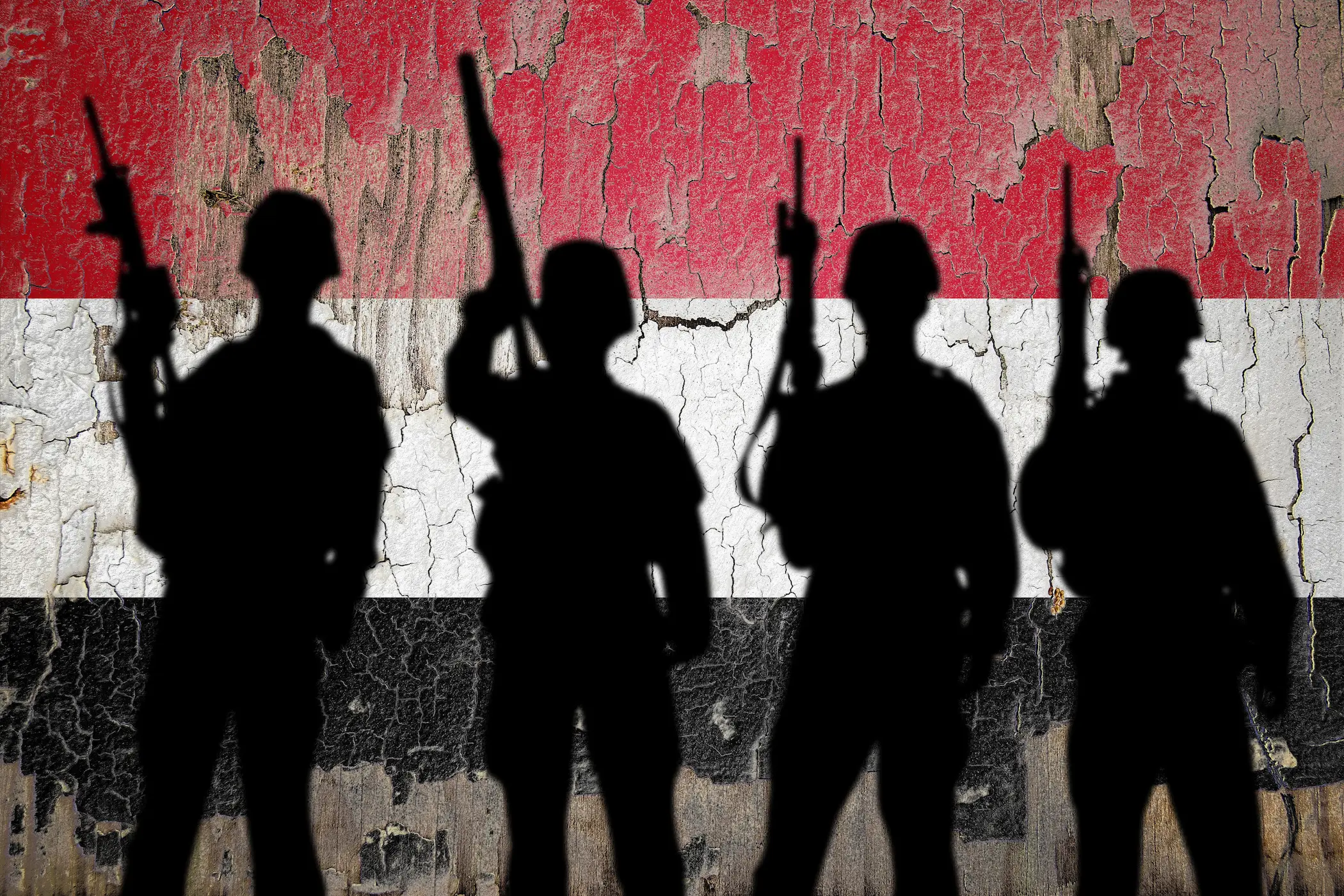
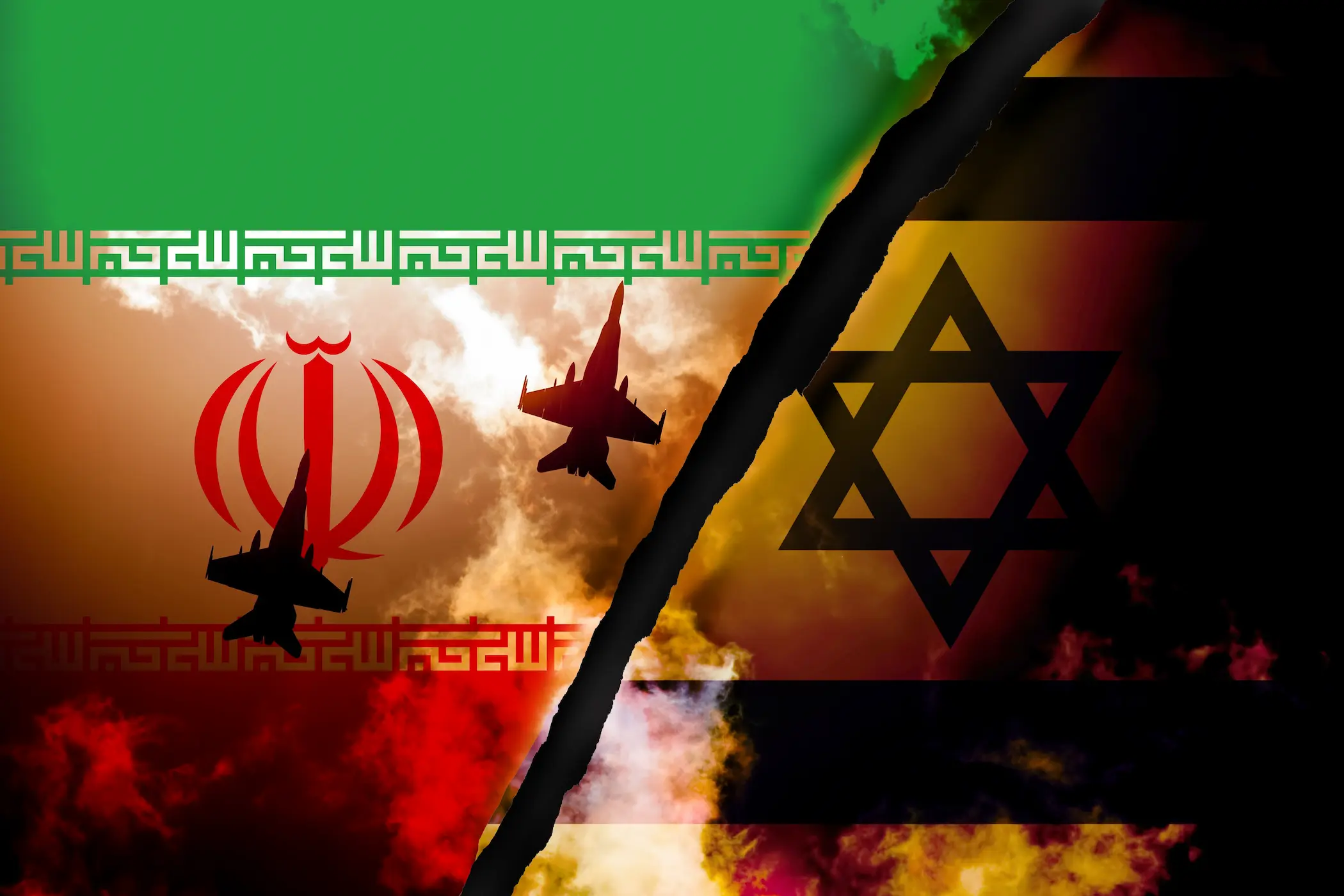
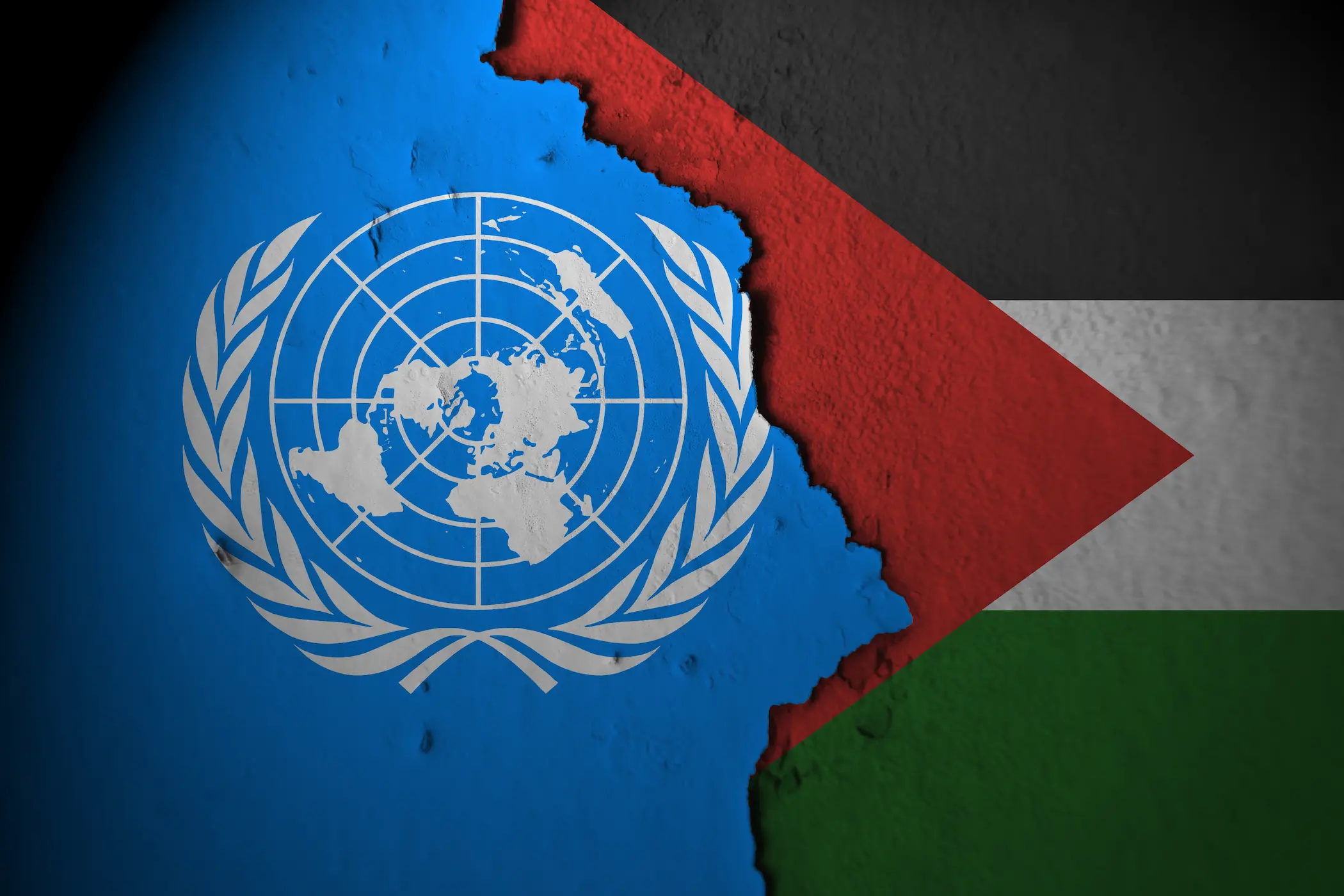
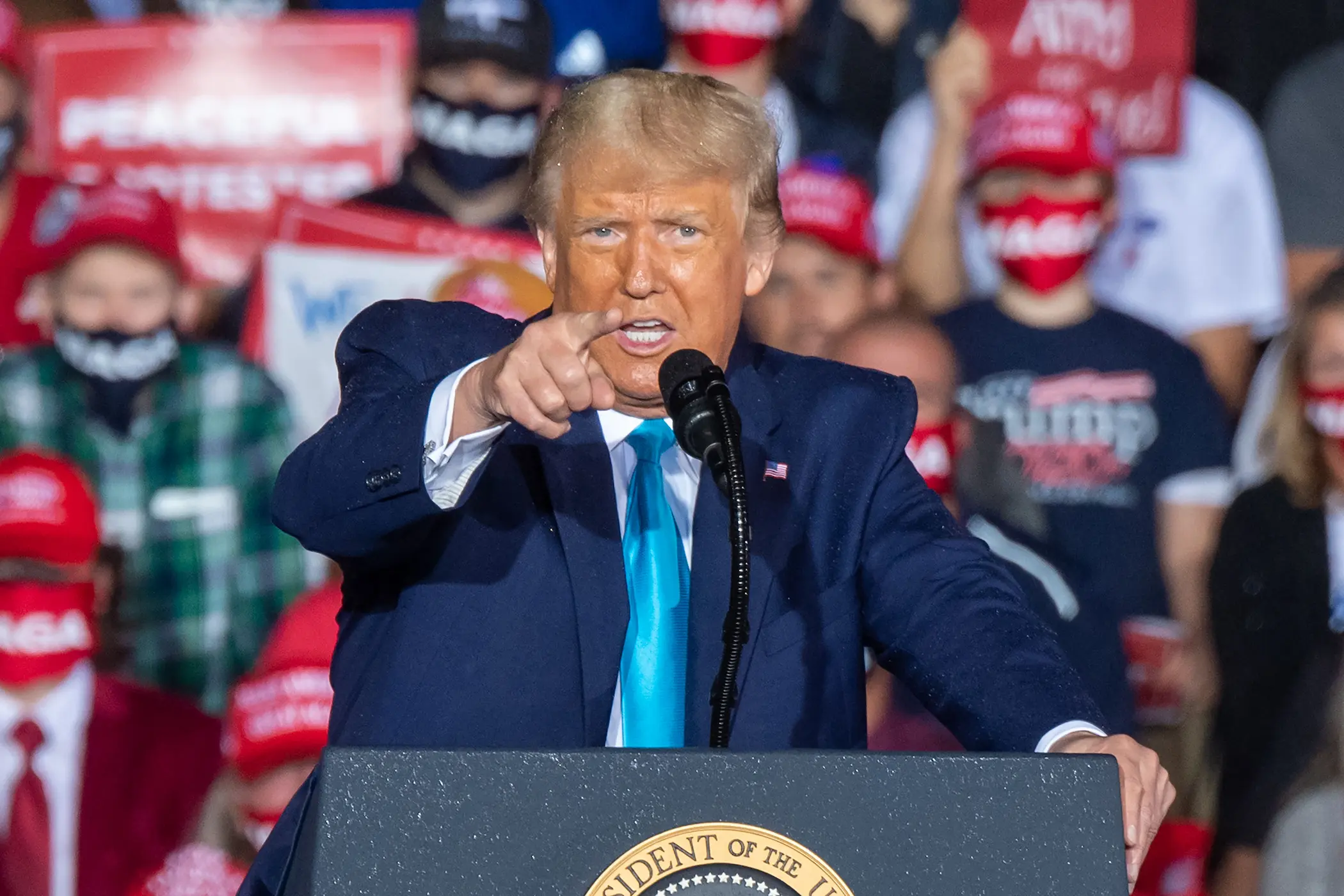
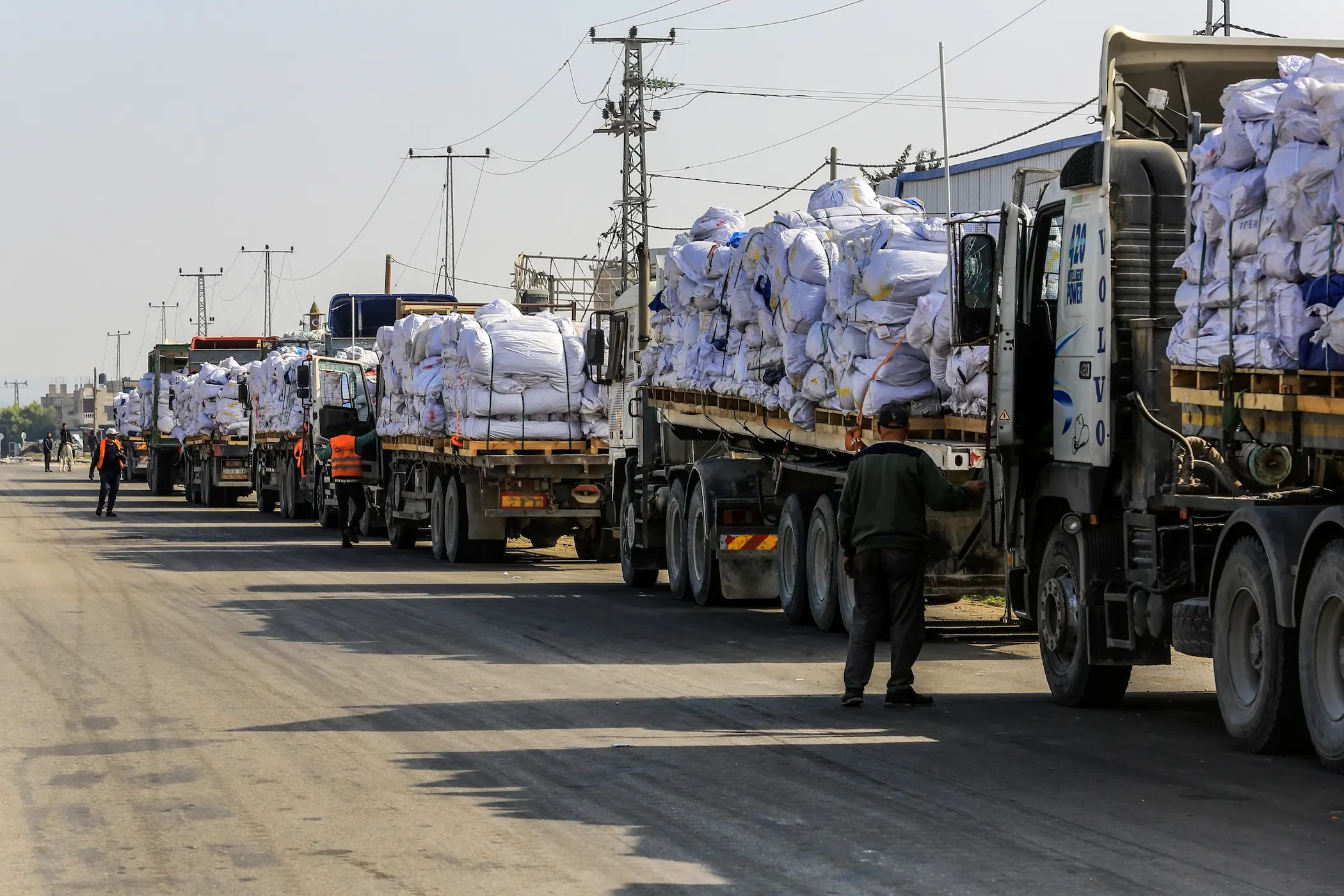




Comments